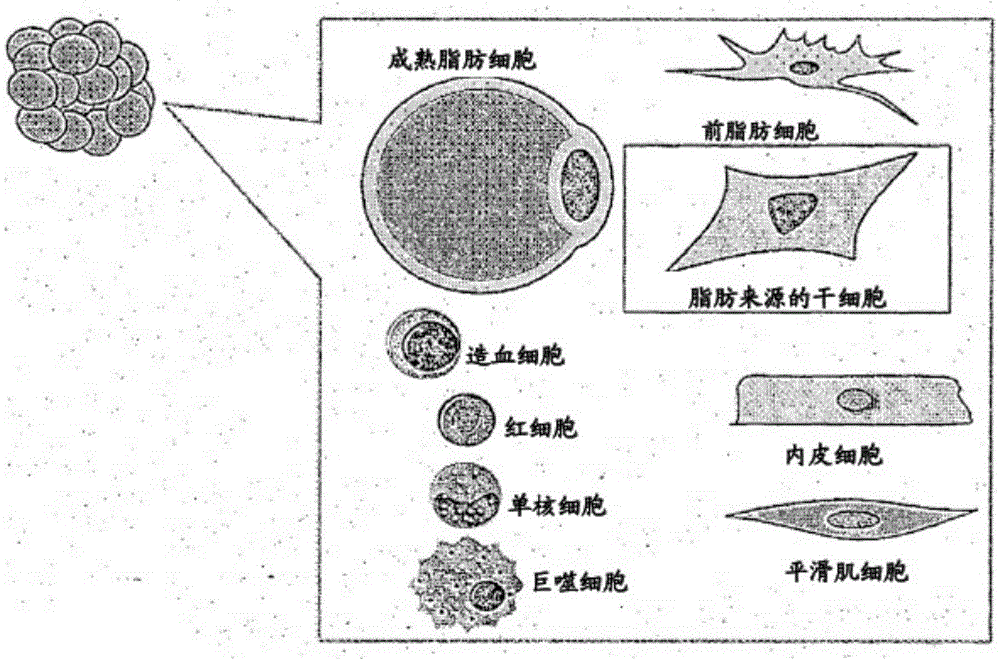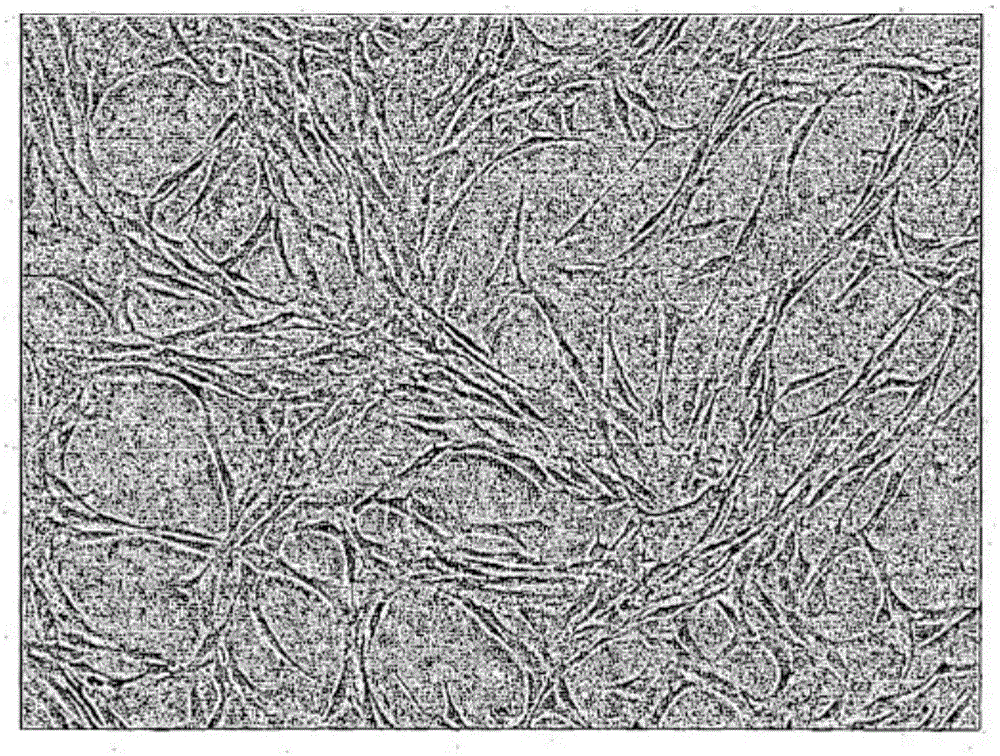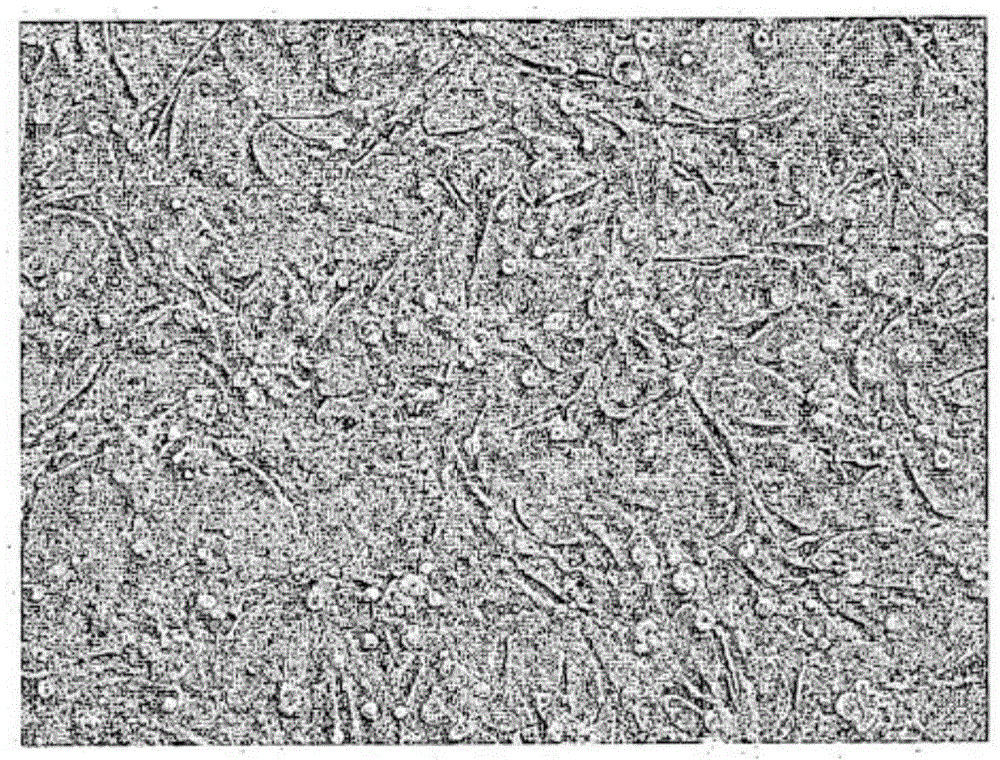Method for isolating stromal vascular fraction
A technique of stromal vascular components and homogenization, applied in the field of molecular biology, can solve problems such as safety concerns, increased contamination risks, and difficult quality control
- Summary
- Abstract
- Description
- Claims
- Application Information
AI Technical Summary
Problems solved by technology
Method used
Image
Examples
Embodiment 1
[0058] Example 1 - Preparation of post-harvest samples
[0059] method
[0060] Adipose tissue obtained as a lipoaspirate or surgically resected is obtained prior to performing any of the methods as described herein. To ensure optimal cell viability, it is recommended to isolate the stromal vascular fraction immediately on the day the sample is obtained. Optimally, however, the methods as described herein can be performed within 24 hours of obtaining the sample. If the methods of the present disclosure cannot be performed immediately upon harvesting the sample or within 72 hours of obtaining the sample, the sample is stored at 4°C. In the case of enzymatic digestion, allow the samples to reach room temperature before proceeding to the isolation procedure.
[0061] When obtaining a sample as a lipoaspirate, to remove debris, the adipose tissue is washed with an equal volume of buffer, such as phosphate-buffered saline (PBS) or Hanks' balanced salt solution (HBSS). For examp...
Embodiment 2
[0064] Example 2 - Traditional Enzymatic Methods
[0065] Known enzymatic methods for recovering stromal vascular components have been described previously (WO2011 / 032025; Sugii et al., 2010 and Sugii et al., 2011). Briefly, the known / traditional enzymatic method involves the following steps:
[0066] i) Add an equal volume of collagenase solution (ml / gram or cc fat pad) to a sterile vial and warm to 37°C. Typically, the collagenase solution consists of 2.5 μg / ml type I collagenase, 1% (wt / vol) bovine serum albumin (BSA), 50 μg / ml D-glucose and 200 nM adenosine in buffer;
[0067] ii) placing the washed adipose tissue in a collagenase solution;
[0068] iii) finely mincing the tissue with sterilized scissors;
[0069] iv) Shake the vial in a 37°C water bath shaker (about 100 rpm) for 30-60 min. Check the digest every 10 minutes, and stop the reaction when the reaction is complete;
[0070] v) Transfer and filter the digested solution through a 250 μm nylon filter. Then f...
Embodiment 3
[0078] Example 3 - Ultrasonic Treatment Method (Water Bath Ultrasonic Apparatus)
[0079] When using ultrasonic treatment method, especially water bath sonicator, the detailed embodiment of the step of the method of the present disclosure is as follows:
[0080] i) placing the washed adipose tissue in an appropriately sized tube;
[0081] ii) Fill with cooled water to the level shown to avoid overheating of the water bath sonicator;
[0082] iii) Sonicate the adipose tissue sample for 5-10 min at the lowest level setting (eg, 40 kHz, using Branson's model 3510). It will be apparent to those skilled in the art that different sonicators will give very different results. Therefore, optimization of sonication time and intensity will be required;
[0083] iv) The samples were centrifuged at 400 g for 5 min to pellet the dissociated stromal vascular fraction cells. Transfer the supernatant to a new tube and use it in step vi) below if necessary;
[0084] v) Resuspend the pellet...
PUM
 Login to View More
Login to View More Abstract
Description
Claims
Application Information
 Login to View More
Login to View More - R&D
- Intellectual Property
- Life Sciences
- Materials
- Tech Scout
- Unparalleled Data Quality
- Higher Quality Content
- 60% Fewer Hallucinations
Browse by: Latest US Patents, China's latest patents, Technical Efficacy Thesaurus, Application Domain, Technology Topic, Popular Technical Reports.
© 2025 PatSnap. All rights reserved.Legal|Privacy policy|Modern Slavery Act Transparency Statement|Sitemap|About US| Contact US: help@patsnap.com



